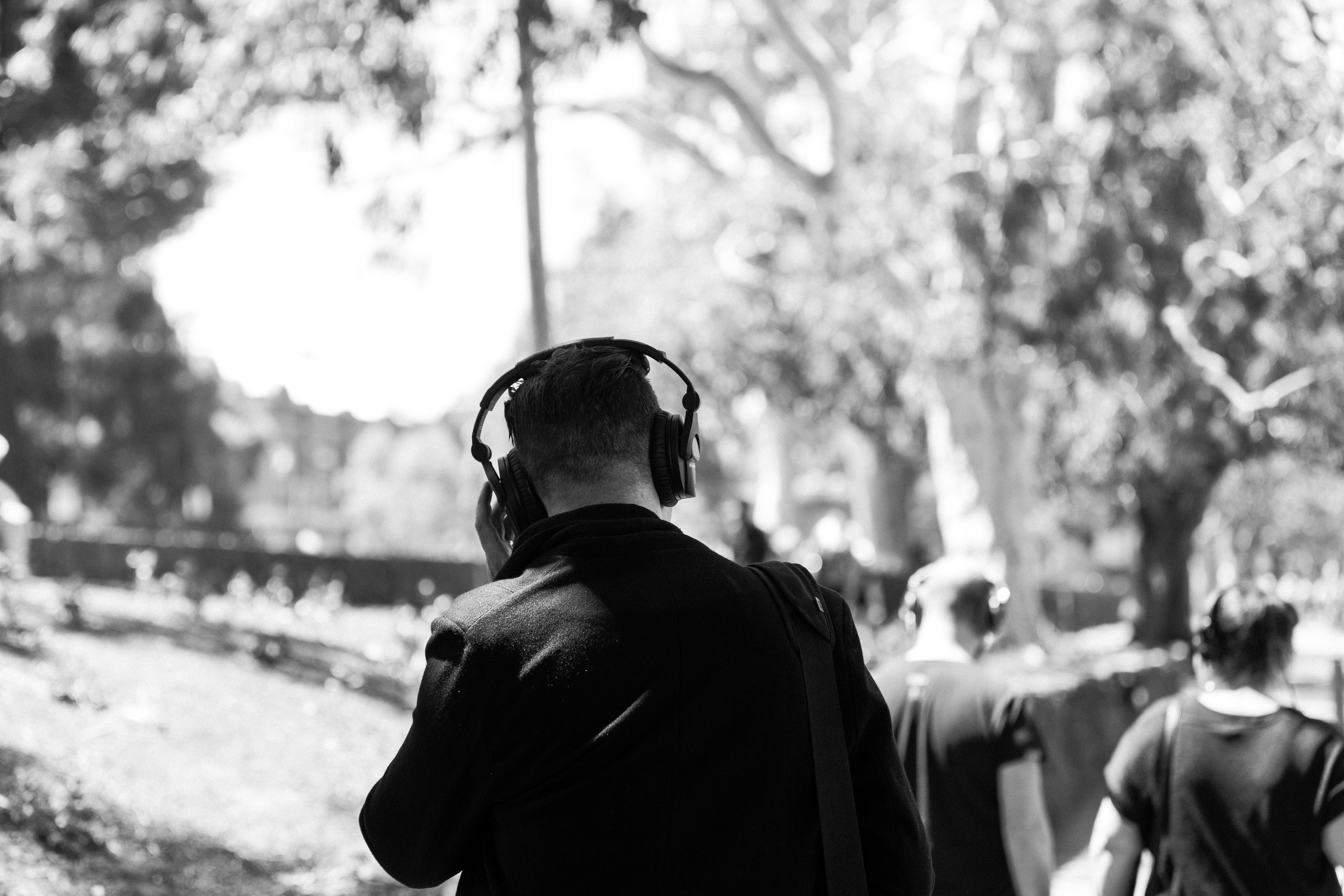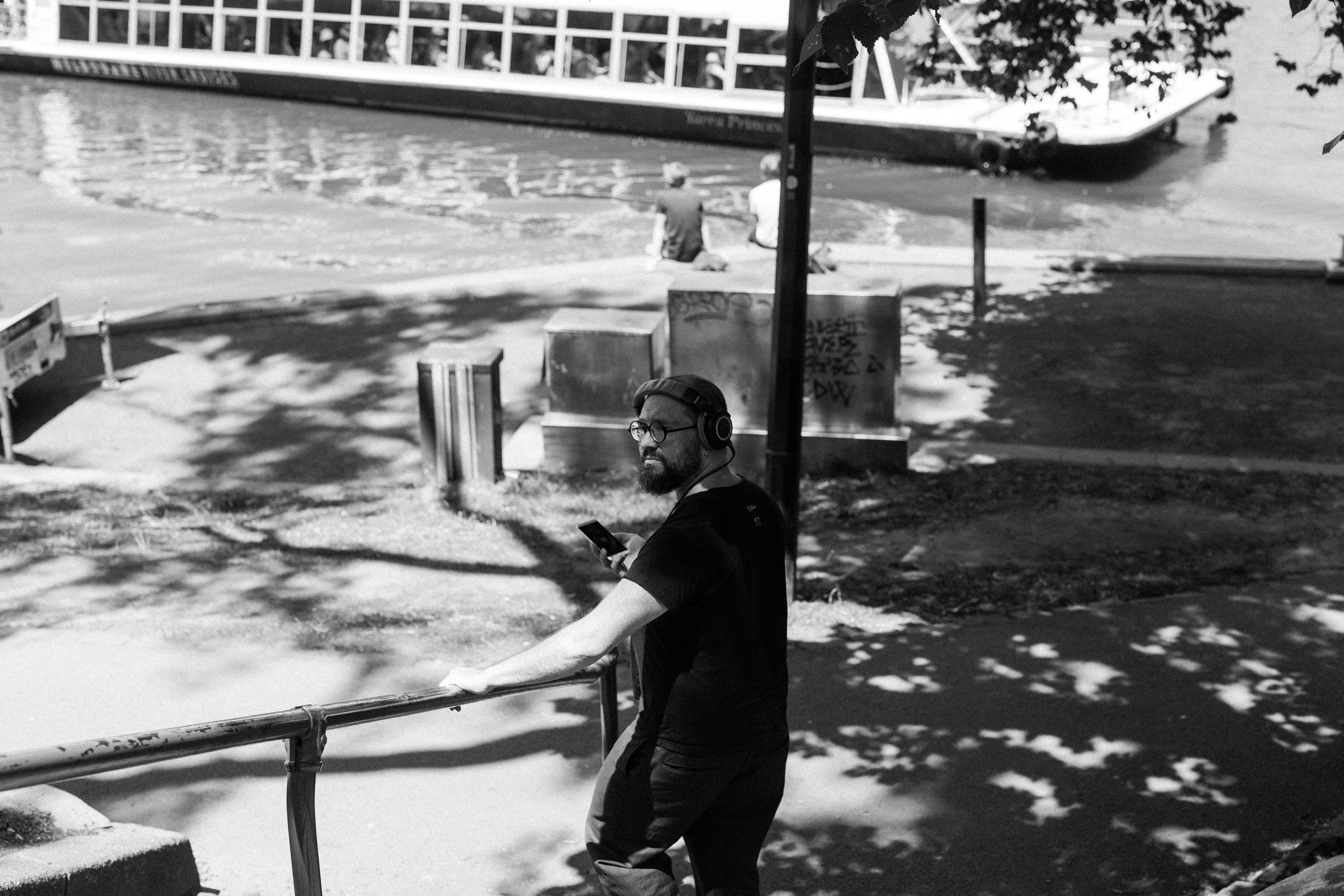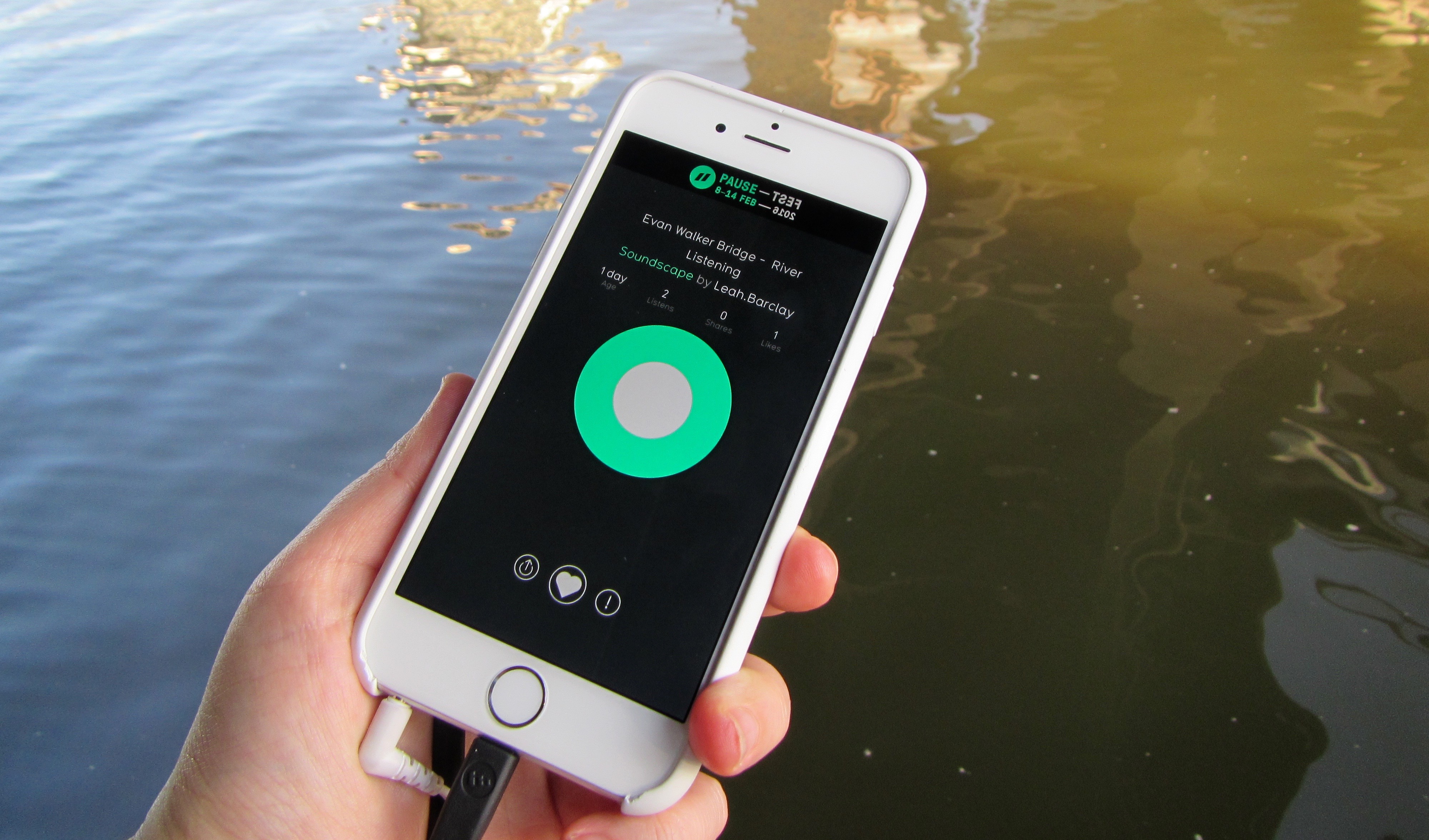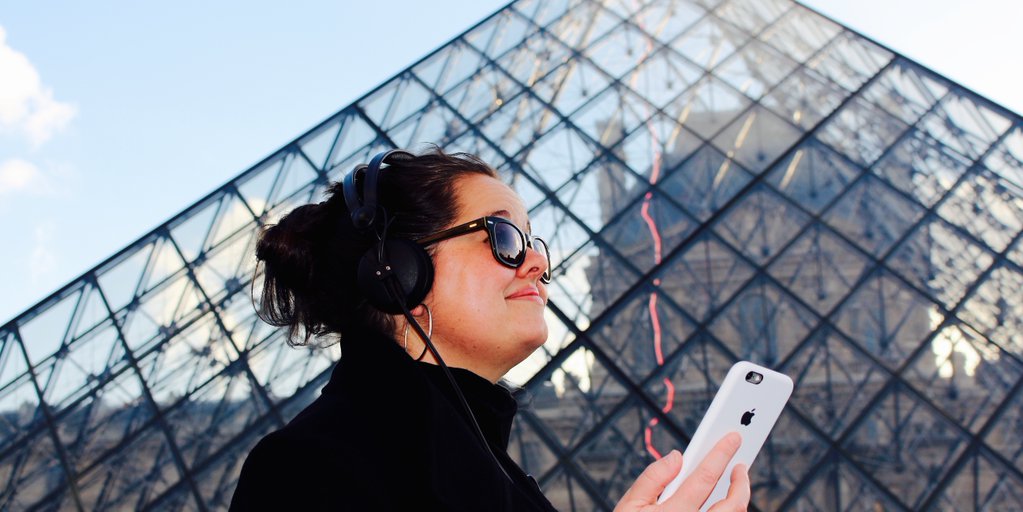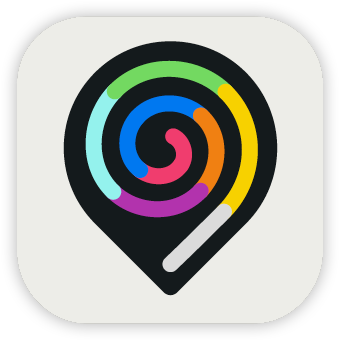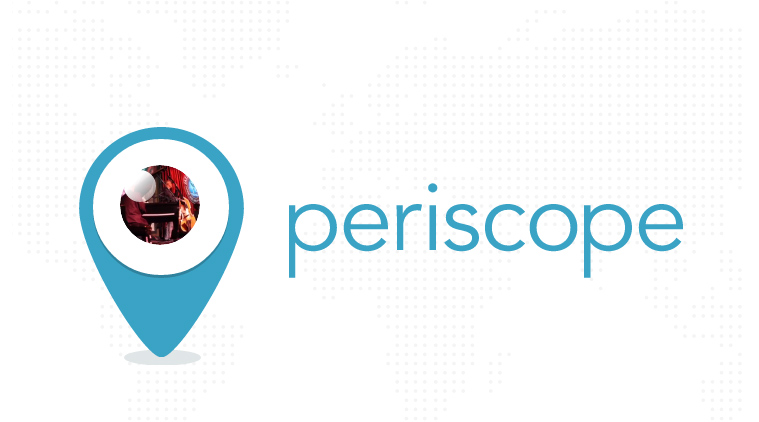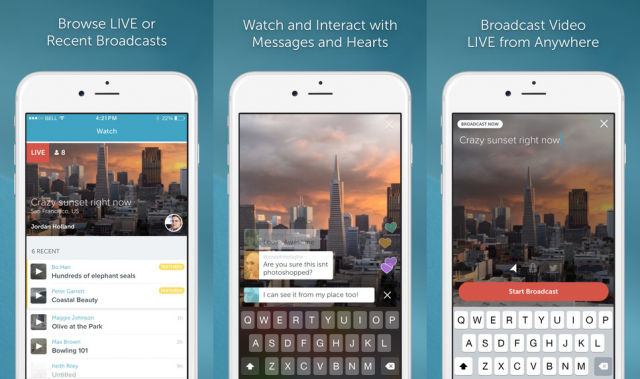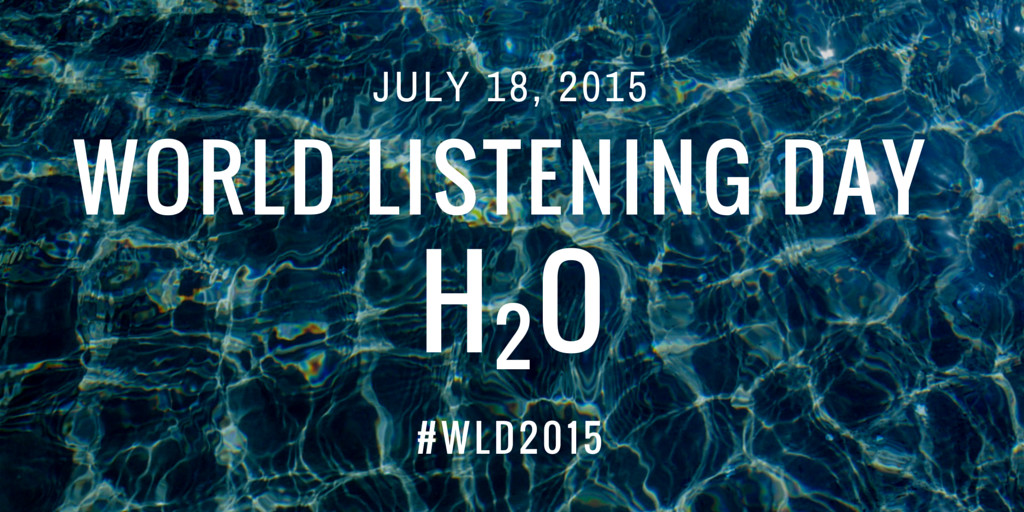
You are invited to participate in World Listening Day 2015, an annual global event held on July 18.
The purposes of World Listening Day are to:
- Celebrate the listening practices of the world and the ecology of its acoustic environments;
- Raise awareness about the growing number of individual and group efforts that creatively explore Acoustic Ecology based on the pioneering efforts of the World Soundscape Project, World Forum for Acoustic Ecology, La Semaine du Son, Deep Listening Institute, among many others;
- Design and implement educational initiatives that explore these concepts and practices.
This year’s theme for World Listening Day is “H2O”.
The global water crisis means 750 million people around the world lack access to safe water. Water is rapidly becoming the commodity of the 21st century and the catastrophic effects of climate change often involve negative associations with water. Rising sea levels, devastating floods, melting ice in Antarctica and droughts spreading throughout the globe, all highlight our increasingly unpredictable and extreme relationship with water.
Yet H2O is vital for life, water covers 71% of the Earth’s surface, and 60% of our bodies are made of water. Oceans, rivers and lakes are the core of many of the world’s iconic cities and historically civilizations formed around water. Indigenous communities across the globe believe water is at the core of our existence. For thousands of years communities have lived sustainably by holding significant cultural and spiritual value of rivers, lakes and oceans.
World leaders believe we need to create a cultural shift in how we think about water. We need a better understanding and awareness of the value of water and we need to make critical changes to avoid the ramifications of the global water crisis. In the words of Sylvia Earle “even if you never have the chance to see or touch the ocean, the ocean touches you with every breath you take, every drop of water you drink, every bite you consume. Everyone, everywhere is inextricably connected to and utterly dependent upon the existence of the sea.”
World Listening Day 2015: H2O invites you to reflect on water, metaphorically in how you listen, or through creative events inspired by water and sound across the globe. The 2015 theme resonates at a time where we need to shift our collective thinking and actions towards water globally.
World Listening Day 2015 includes the H2O virtual symposium hosted onWaterWheel, an electronic publication, and hundreds of events taking place across the globe.
World Listening Day is co-organized by the World Listening Project (WLP), the Midwest Society for Acoustic Ecology (MSAE) and Biosphere Soundscapes. July 18 was chosen because it is the birthday of Canadian writer, educator, philosopher, visual artist, and composer R. Murray Schafer. His efforts leading the World Soundscape Project and his seminal book, The Tuning of the World, inspired global interest in a new field of research and practice known as Acoustic Ecology.
World Listening Project, Midwest Society for Acoustic Ecology and Biosphere Soundscapes invite you to participate in World Listening Day 2015 on Saturday, July 18, and through the week of July 12th-18th. Some suggestions on how you can participate and organize include:
- Soundwalks or listening events in your local community, with a particular focus on oceans, rivers, lakes and catchments
- Field recording trips or workshops
- Site-specific performance events
- Concerts curating water inspired compositions (contact us to connect with composers and sound artists)
- Personal experiences of attentive listening or field recording
- Educational events that relate to acoustic ecology, field recording, or a similar topic
- Public talks or lectures about listening, water and acoustic ecology including participation in the World Listening Day H2O virtual symposium on July 17-18.
Use the hashtag #WLD2015 to connect with other local and global groups participating in the World Listening Day 2015: H2O and get involved.
Participation in World Listening Day is rapidly expanding every year. In this sixth year we anticipate even greater activity and interest.
Please join in the World Listening Day 2015 activities by emailing [email protected] about your plans and be sure to include “World Listening Day” in the subject line.
Please fill out the World Listening Day 2015 online participation form so we can promote your projects and include them in our documentation.
Please use our Quick Submission Form if you would prefer to provide brief details about your activities. It will only take two minutes! Thanks!




